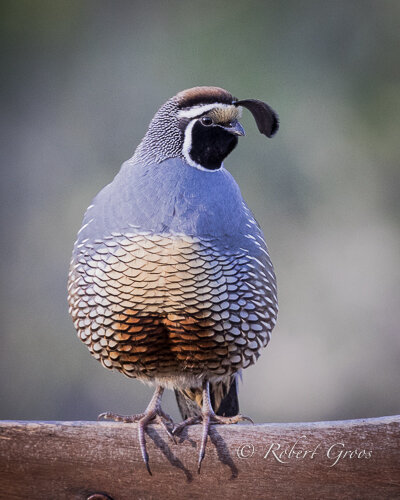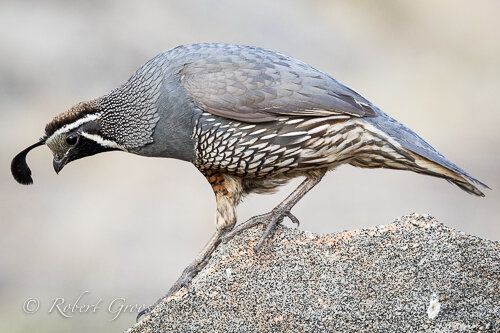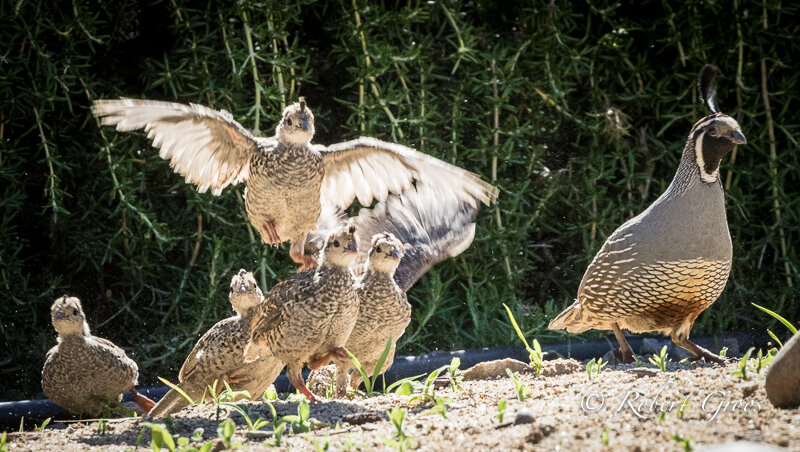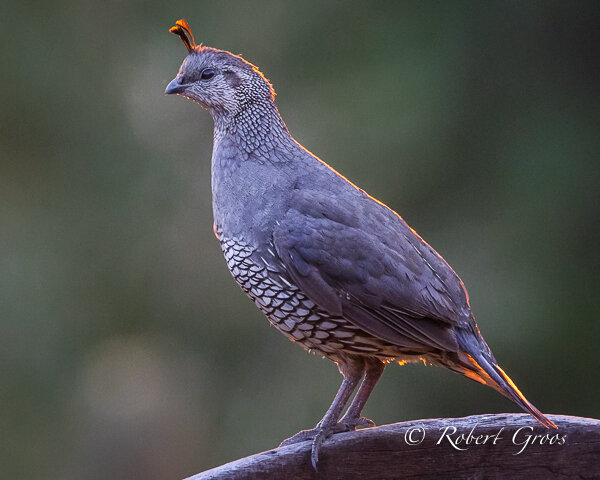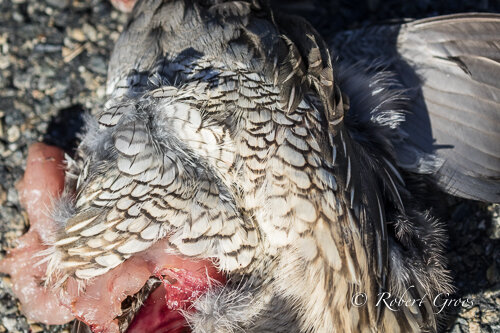California Quail: family loving, social birds
What’s not to love about California Quail, the state bird of California?
From early morning until dusk, I hear their distinct vocalization resounding throughout the valley where I live: chi-Ca-go, chi-Ca-go. This call seems to say: “I’m here. Where are you? Let’s keep together.” This sound is essential for survival of the group.
Male California Quail
Its scientific name, Callipepla californica, means beautiful woven robe. And with good reason. The male boasts a rich, blue-gray body, with an exquisite brown and white belly. The black tips of these under feathers create a scaled pattern. The elegant plume atop the head is composed of not one, but six individual feathers. In size, quail stand somewhere between a robin and a crow.
For millennia, California Quail (aka California partridge, valley quail) have been hunted . . . by hawks, coyotes, and humans. Native Californians coveted quail feathers as adornment for their baskets and clothing. Its delicious flesh makes quail a prize game bird. Quail eggs, also, are subject to active predation from ground squirrels, Western Scrub Jays, and snakes.
No wonder quail are so skittish. When startled, they skitter across the ground in search of cover, their little legs carrying a plump forward leaning body, moving rapidly without a hop or bounce. In dire cases they burst noisily into flight towards the nearest tree canopy. Their most lethal predator, the Cooper’s Hawk, will deliberately crash into the brush where quail seek cover, trying to flush its prey into the open. A spooked quail most likely will end up in the talons of the hawk.
Quail are family loving, social birds. If a chick becomes separated from its parents, it is not unusual for another set of parents to adopt it into its fold. Families combine into groups, or coveys, which can number up to 75 or more birds. A female lays an average of 14 eggs, although this year eight seemed to be the norm around here. Interestingly, if the eggs are touching, pre-hatched chicks can apparently communicate with each other, coordinating their break-out to occur almost simultaneously.
Male California Quail acting as sentinel.
When the birds are feeding, or perhaps taking a dirt bath, a male will typically act as a sentinel. I watch a male exit the brush, like a scout, and survey the surrounding area. Once sure of the safety of the group, it gives an all clear signal. Then, standing guard on the ground or on a perch, and fully exposed to danger, it maintains a watchful eye for predators.
The first family I saw this June was a male with eight chicks in tow, about 10 days old, just learning to fly. There was no female with the group. Clearly, that lone adult had a heavy responsibility.
California Quail chicks learning to fly.
June is the time when quail have paired up, and start brooding, chicks begin hatching, and coveys form. Keep your eyes on the lookout for this wonderful spectacle. But, don’t move…you’ll spoil the show.
p.s. If you are not already on my mailing list and wish to be added for future posts, please send an email to: robertgroos1@gmail.com. Your information will not be shared, and you can unsubscribe at anytime. Thank you.


